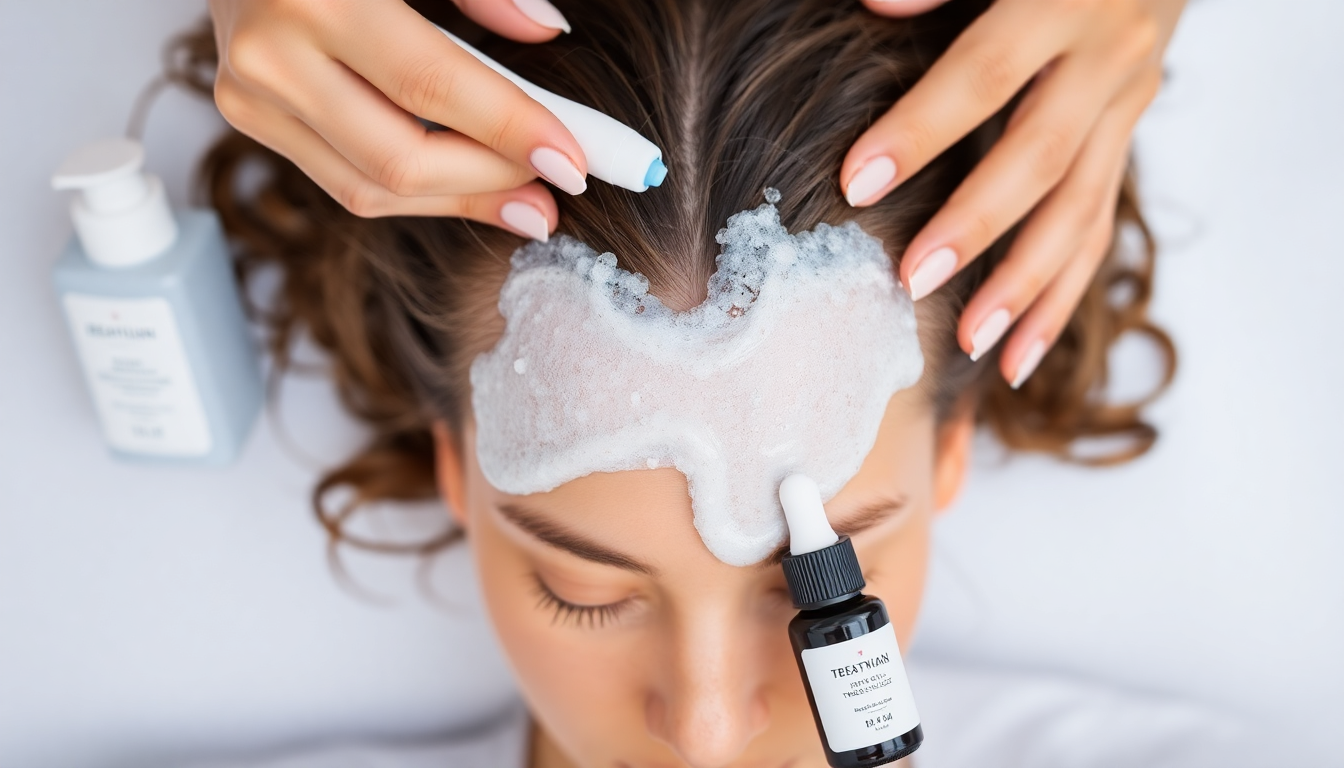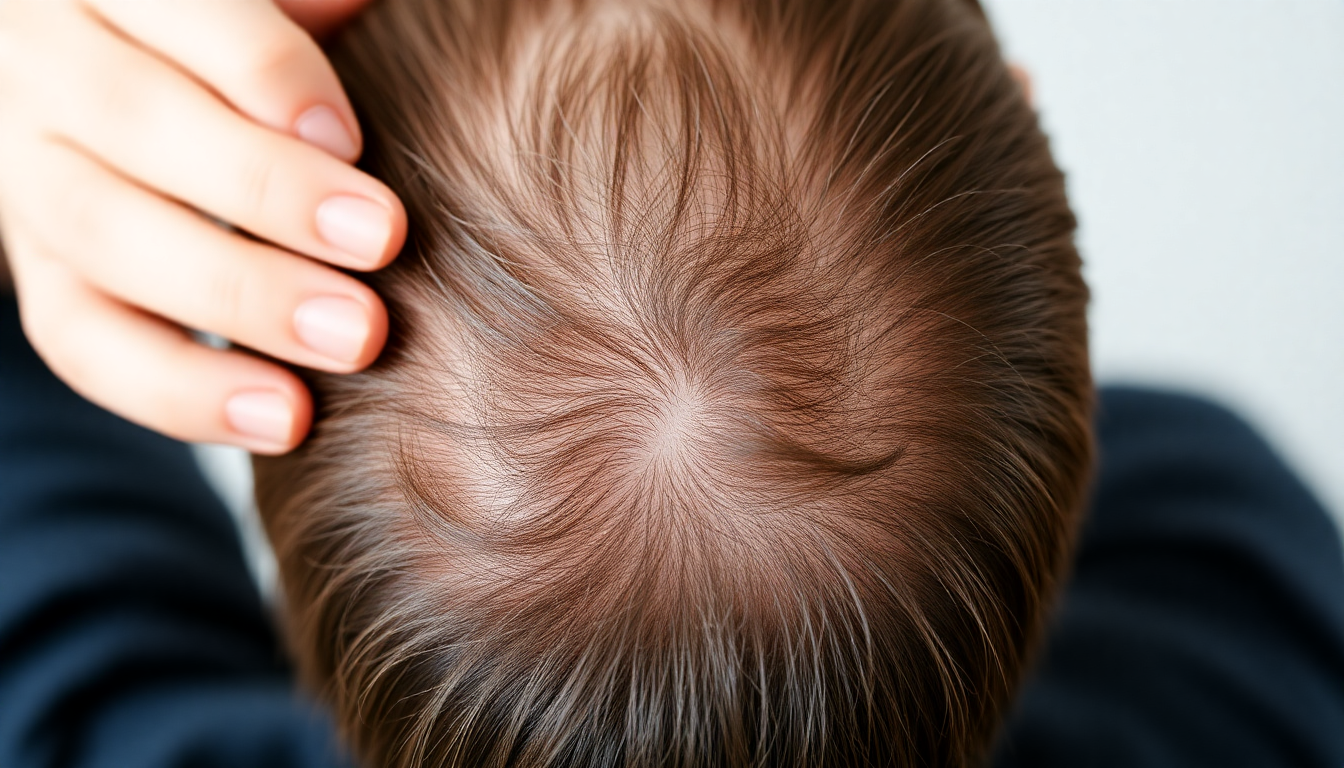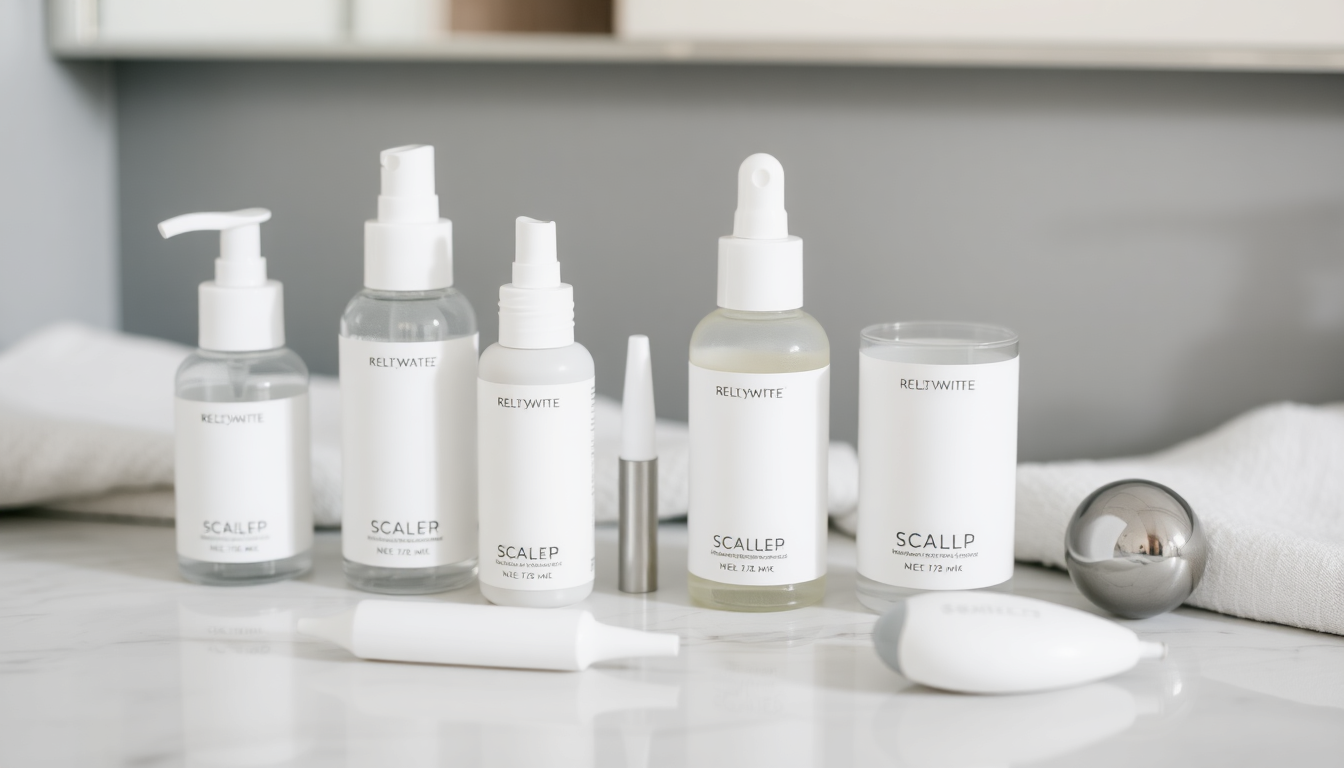Introduction: A Sensitivity‑First Path to Stronger Hair (2025)
Sensitive scalps require a different approach to hair density and growth support. Aggressive actives, harsh surfactants and heavy fragrances often worsen inflammation and reduce tolerance to beneficial treatments. This comprehensive tutorial shows how to design a low‑irritant scalp regimen that combines three complementary pillars — peptide serums, prebiotic therapies and safe at‑home devices — to support hair density while minimizing flare‑ups. Whether you have reactive skin, eczema, frequent flaking or just a tendency to react to new products, this step‑by‑step guide will help you build a routine that balances efficacy and tolerance.
How This Article Helps You
- Explain the science behind peptides, prebiotics and device-assisted therapies in plain language.
- Compare benefits, risks and practical use cases for each approach.
- Provide a sensitivity‑first daily, weekly and monthly regimen with alternatives for different levels of reactivity.
- Offer product selection guides, patch testing instructions and troubleshooting tips.
- Include sponsored, targeted product recommendations for a gentle start — see Eelhoe peptide and prebiotic options linked in product sections.
Scalp Sensitivity: What It Is and Why It Matters for Density
Scalp sensitivity can present as itching, stinging, burning, redness, increased flaking or tightness after product use. When the scalp barrier is compromised, inflammatory signaling can harm the follicular environment and contribute to shedding or reduced anagen (growth) phase function. That doesn't mean you can't support density — it means you need to reduce triggers and choose supportive, barrier‑friendly ingredients.
Key Principles for a Low‑Irritant Regimen
- Minimize friction and mechanical trauma during washing and styling.
- Avoid unnecessary fragrance and essential oils at high concentrations.
- Use pH‑balanced, sulfate‑free cleansers that preserve lipids and microbiome balance.
- Start one new product at a time and maintain consistent intervals for evaluation.
- Prioritize leave‑on, hydrating, microbiome‑friendly and clinically supported ingredients.
Illustration: Low‑Irritant Routine Components

Deep Dive: Peptide Serums for the Scalp
Peptides are short amino acid chains that can act as signaling molecules. In scalp care, certain peptides are formulated to: support follicular cell health, modulate inflammation, boost microcirculation and offer antioxidant effects. Peptide serums are often lightweight and designed as leave‑ons to deliver actives without heavy occlusion.
Types of Peptides and What They Do
- Signal peptides: Support repair and extracellular matrix support around hair follicles.
- Carrier peptides: Help deliver copper or cofactors that support enzymatic processes relevant to follicle health.
- Vasoactive peptides: May increase local blood flow and nutrient delivery.
Formulation Tips: What to Look For in a Peptide Serum
- Water‑based, lightweight texture for better tolerance on sensitive scalps.
- Low or zero fragrance and non‑sensitizing preservatives.
- pH compatible with scalp skin (roughly pH 4.5–6).
- Complementary humectants (e.g., glycerin, panthenol) to support barrier hydration.
- Concentration transparency and clinical support where available.
Practical Use of Peptide Serums
- Start with twice‑weekly applications on a small test area; increase frequency if tolerated.
- Apply to damp scalp to aid absorption and reduce potential stinging.
- Layer under styling products; avoid combining immediately with strong actives (e.g., high‑strength retinoids taken topically on adjacent skin).
Illustration: Peptide Serum Application

Deep Dive: Prebiotic Scalp Therapies
Prebiotics are non‑digestible ingredients that nourish beneficial microbes. On the scalp, prebiotic tonics and leave‑on treatments aim to promote a balanced microbiome, reducing dysbiosis that can trigger inflammation. Rather than killing microbes, prebiotics favor healthy microbial communities that coexist with a stable skin barrier.
Common Prebiotic Ingredients
- Inulin and fructooligosaccharides (FOS)
- Beta‑glucans and plant oligosaccharides
- Postbiotic extracts and fermented actives that support barrier repair
Why Prebiotics Are Especially Useful for Sensitive Scalps
Because they do not rely on antimicrobial activity, prebiotics avoid disrupting the microbial ecology. They can reduce pro‑inflammatory species dominance and support the skin’s innate defenses. Results are often gradual — expect improvements in comfort and flaking over weeks to months rather than days.
Practical Use of Prebiotic Treatments
- Use nightly as a leave‑on tonic or spray after washing, especially during flare‑ups.
- Combine with emollients (lightweight) if additional barrier support is needed.
- Rotate with peptide serums if layering causes sensitivity — e.g., peptides AM, prebiotics PM.
Illustration: Prebiotic Leave‑On Tonic

Device‑Assisted Therapies: Options, Evidence & Safety
Devices can enhance circulation, promote follicle health and improve product penetration. For sensitive scalps, device choice and technique are critical because misuse can cause irritation.
Low‑Level Laser Therapy (LLLT)
LLLT uses red and near‑infrared light to stimulate cellular energy processes and improve local circulation. When used as directed, LLLT has clinical data supporting modest increases in hair density over months. For sensitive scalps, LLLT is non‑invasive and usually well tolerated.
Microneedling / Dermarollers
Microneedling creates microchannels that can increase topical absorption and stimulate wound healing cascades. For sensitive scalps, minimize needle length (0.25–0.5 mm) and frequency (every 2–4 weeks) to lower the risk of irritation or infection. Microneedling should be avoided during active flares or when using strong topicals that increase photosensitivity or irritation.
Scalp Massagers & Mechanical Stimulation
Gentle silicone or soft‑bristle massagers improve product distribution and blood flow without trauma. Avoid aggressive scraping or vigorous circular pressure that may aggravate fragile skin.
Device Safety Checklist for Sensitive Scalps
- Buy devices from reputable manufacturers with clear usage guidelines.
- Start conservatively: lower dose/frequency and short sessions.
- Sanitize device heads between uses and never use on inflamed/open lesions.
- Stop use if you develop persistent redness, pain or signs of infection and consult a clinician.
Illustration: LLLT Cap & Microdevice Use

Putting the Pillars Together: Comparative Scenarios
Below are three pragmatic regimens tailored to different sensitivity and commitment levels.
Scenario A — Mild Sensitivity, Daily Active Lifestyle
- Mornings: Sulfate‑free cleanser (every other day as needed), apply lightweight peptide serum to damp scalp, use soft massager 1–2 minutes, style lightly.
- Nights: Prebiotic leave‑on tonic nightly. LLLT sessions 3x/week for 10 minutes if using device.
- Weekly: Gentle enzyme exfoliation once weekly.
Scenario B — Moderate Sensitivity, Prefer Minimal Products
- Mornings: Gentle co‑wash or mild cleanser twice weekly; otherwise rinse with water. Apply prebiotic tonic twice weekly, or nightly if well tolerated.
- Nights: Peptide serum every 3 nights. LLLT once or twice weekly to reduce device exposure.
- Weekly: No microneedling initially; introduce only if scalp tolerance is excellent after 3 months.
Scenario C — Reactive Scalp with Periodic Flares
- Baseline: Maintain a bland routine with fragrance‑free cleanser and a simple prebiotic barrier tonic daily.
- During flares: Pause peptides and microneedling; use calmers (colloidal oatmeal, panthenol, low‑dose cortisone formulations only under medical guidance).
- Reintroduction: Once calm, reintroduce peptide serums at low frequency and re‑start devices slowly.
Extended Usage Protocols: 24‑Week Progressive Plan
Expect hair density changes to be gradual. Use this extended plan to balance stimulus and recovery for sensitive scalps.
- Weeks 1–4: Establish gentle cleansing routine + nightly prebiotic tonic. Patch test peptide serum and use 1–2x/week if tolerated.
- Weeks 5–12: Increase peptide serum to every other night if no reaction; introduce LLLT 2–3x/week. Monitor scalp diary weekly.
- Weeks 13–20: Continue combined approach; consider adding gentle microneedling (0.25 mm) every 3–4 weeks if tolerated. Evaluate density and shedding with photos every 4 weeks.
- Weeks 21–24: Review results and refine — maintain what works, reduce or rotate products that cause dryness or irritation. Continue prebiotic maintenance nightly for barrier support.
How to Patch Test Correctly
- Select a discrete area behind the ear or on the nape of the neck.
- Apply a pea‑sized amount of the product once daily for 48–72 hours (avoid washing that spot if possible).
- Check for redness, swelling, itching or blistering. If none appear, you may proceed to limited scalp use.
- If reaction occurs, stop immediately and consult a healthcare professional if severe.
Ingredient Watchlist: What to Avoid or Use Cautiously
- High concentrations of ethanol or denatured alcohol — can strip lipids and dry the scalp.
- High levels of essential oils and fragrances — common irritants for reactive scalps.
- Sodium lauryl sulfate and harsh anionic surfactants — opt for gentler alternatives.
- Strong peeling actives (high‑strength AHAs/BHAs) on inflamed scalp areas.
Product Selection: SEO‑Smart Keywords & Sponsored Picks
Choosing products with targeted keywords can help you find sensitivity‑friendly options. Look for terms like "sensitive scalp peptide serum", "prebiotic scalp treatment for sensitive skin", "sulfate free gentle shampoo" and "LLLT device for thinning hair".
Recommended starter products (examples):
- peptide hair serum — lightweight, fragrance‑free formula designed for sensitive scalps.
- prebiotic scalp treatment — leave‑on tonic with inulin and beta‑glucans to support microbiome balance.
- sensitive scalp peptide serum boosters and device‑friendly ampoules for layering with LLLT sessions.
Illustrations: Product Close‑Ups

Case Studies (Hypothetical Examples for Clarity)
These anonymized, illustrative case scenarios highlight how individuals with different sensitivities might progress. They are examples, not medical endorsements.
- Case 1 — Emma, 34, Mild Reactivity: Emma used a peptide serum nightly after 2 weeks without irritation and added LLLT 3x/week. After 16 weeks she reported less shedding and visual improvement in density.
- Case 2 — Rohan, 46, Moderate Sensitivity: Rohan prioritized prebiotic tonics for the first 6 weeks, introduced peptide serum slowly and used LLLT twice weekly. He found reduced flaking and gradual thickening after 20 weeks.
- Case 3 — Maria, 28, Reactive Scalp: Maria experienced periodic dermatitis flares. Teaming up with a dermatologist, she used a medical plan for flares and maintained prebiotic support between episodes. After stabilization, she introduced peptides at low frequency with good tolerance.
Advanced Tips for Product Layering
- Apply thinnest, water‑based products first (e.g., peptide serums), then thicker tonics or boosters.
- Wait a minute between layers to let each product absorb; this reduces mixing and potential irritation from ingredient interactions.
- Avoid combining two new actives on the same night — stagger introductions to isolate reactions.
Interactions with Prescription Treatments
If you are using topical prescription treatments (e.g., topical minoxidil, corticosteroids), discuss new device use or active topicals with your prescribing clinician. Some devices can increase absorption and alter the effective exposure of topical meds.
Troubleshooting: Common Questions Answered
Q: How long until I see meaningful density changes?
A: Hair cycles are slow; expect at least 12–24 weeks of consistent use to evaluate changes. Some improvements in scalp comfort and reduced shedding may appear sooner.
Q: Can I use peptides with minoxidil?
A: Many people layer peptides with topical minoxidil. If combining, start slowly and patch test to ensure no increased irritation. Consult your clinician if using prescription treatments.
Q: Is microneedling safe for everyone?
A: Microneedling can be helpful but carries higher risk for irritation, infection and scarring if misused. Sensitive scalps require shorter needles, less frequent sessions and strict hygiene. Consult a professional for higher‑risk skin types.
Evidence & Research Notes (Non‑Exhaustive)
Research on LLLT and certain peptides shows positive signals for supporting hair density in controlled settings, while prebiotic scalp science is an evolving field focusing on microbiome modulation rather than direct hair stimulation. Individual responses vary and more high‑quality comparative trials are ongoing. Always prioritize safety and clinician guidance for complex cases.
Shopping Checklist: What to Look For (Quick Reference)
- "Fragrance‑free" or "unscented" labeling
- "Sensitive scalp" or "dermatologist tested" claims with ingredient transparency
- Water‑based peptide serum formulations and pH information if available
- Prebiotic tonics listing inulin, beta‑glucan, or plant oligosaccharides
- LLLT devices with manufacturer dosing guidelines and safety certifications
Sponsored Recommendations & Where to Start
If you want to try scientifically informed, sensitivity‑focused products, consider exploring targeted formulations from trusted brands. Eelhoe offers a curated range that includes a peptide hair serum and a gentle prebiotic scalp treatment designed for reactive skin. Their product pages provide ingredient lists, usage tips and device‑friendly booster options to help you build a tailored routine: Eelhoe sensitive scalp solutions. These options are optimized for layering with LLLT and massagers to support hair density without compromising comfort.
Maintenance & Long‑Term Strategies
- Keep a simple maintenance routine once your scalp is stable: prebiotic tonic nightly, peptides as tolerated and LLLT 2–3x/week.
- Rotate products seasonally if your scalp reacts differently with humidity or cold weather.
- Consider periodic professional scalp assessments (trichology) if you experience plateauing or increased shedding.
Final Checklist Before You Begin
- Patch test all new items. Keep a 48–72 hour watch period.
- Introduce one product or device at a time and record effects in a simple log (date, product, reaction).
- Consult your dermatologist for active scalp disease, persistent inflammation or if you are on systemic medications.
Conclusion: Move from Sensitivity to Strength, Gently
A sensitivity‑first approach to improving hair density is practical and effective when executed with patience, careful product selection and conservative device use. Peptide serums, prebiotic therapies and appropriate at‑home devices each have a role: peptides to signal repair, prebiotics to balance the scalp ecosystem and devices to enhance circulation and absorption. Together, they offer a balanced strategy that reduces the risk of irritation while supporting measurable improvements over months.
If you're ready to start a sensitivity‑friendly protocol, consider beginning with a gentle peptide serum and a nightly prebiotic tonic. For convenient, formulated options designed with sensitive scalps in mind, browse the Eelhoe collection — they offer peptide hair serum, prebiotic scalp treatment and device‑compatible boosters that make it easy to build a low‑irritant regimen. Visit eelhoe-cosmetics.com to explore products and start a tailored routine today.
Disclaimer: This article is for informational purposes and does not replace professional medical advice. Consult a dermatologist or trichologist for personalized diagnosis and treatment, especially if you have significant hair loss or active scalp inflammation.




اترك تعليقًا
تخضع جميع التعليقات للإشراف قبل نشرها.
This site is protected by hCaptcha and the hCaptcha Privacy Policy and Terms of Service apply.